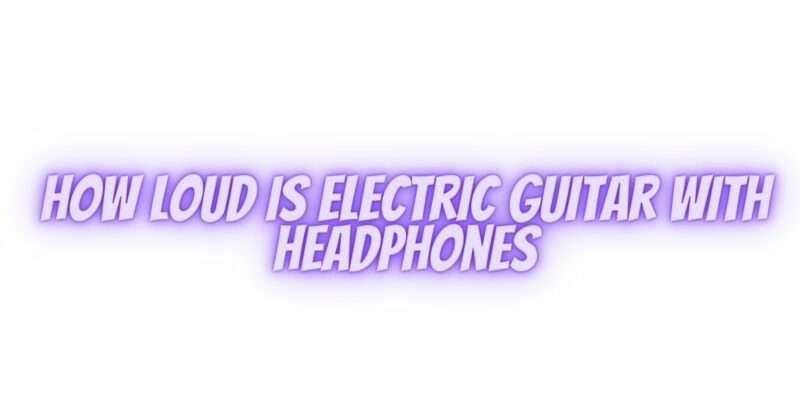Playing an electric guitar with headphones can be a convenient and immersive experience, whether you’re practicing quietly in a shared space or enjoying the full sonic spectrum of your instrument without disturbing others. However, it’s essential to understand the factors that influence the volume of your electric guitar when using headphones and how to ensure safe listening levels. In this article, we’ll explore the loudness of an electric guitar when played through headphones, offer guidelines for volume control, and discuss the importance of protecting your hearing.
- Amplifier and Headphone Combination
The loudness of an electric guitar when using headphones primarily depends on two key components: the amplifier (or amplifier modeling software) and the headphones themselves.
- Amplifier: Modern guitar amplifiers often come equipped with headphone jacks, allowing you to connect your headphones directly. Some amplifiers also have built-in headphone amplifiers designed to optimize the headphone listening experience. The power output of the amplifier plays a significant role in determining the maximum volume achievable through headphones.
- Headphones: The type and quality of headphones you use will greatly impact the loudness and clarity of the guitar sound. Studio-quality headphones are ideal for precise sound reproduction and can handle higher volumes without distortion.
- Volume Control
To control the loudness of your electric guitar when using headphones, you have several options:
- Amplifier Controls: If you’re using a traditional amplifier, it will likely have volume and gain controls that allow you to adjust the output level. Start at a low volume and gradually increase it until you reach a comfortable listening level. Be cautious not to set it too loud, as this can damage your hearing.
- Built-in Headphone Amps: If your amplifier has a dedicated headphone amplifier, you can use its volume controls to fine-tune the output to your liking.
- Computer Software: If you’re using amplifier modeling software on a computer, you can adjust the volume within the software itself. Many programs also offer a master volume control to manage the overall output level.
- Guitar Effects Processors: If you’re using a dedicated effects processor with headphone capabilities, it will typically have volume controls as well.
- Safe Listening Levels
Protecting your hearing should be a top priority when playing an electric guitar with headphones. Prolonged exposure to loud music, even through headphones, can lead to hearing damage over time. Here are some guidelines for safe listening levels:
- Use the 60/60 Rule: Listen at no more than 60% of the maximum volume for no longer than 60 minutes at a time. Take breaks to give your ears a rest.
- Invest in Quality Ear Protection: Consider using musician’s earplugs or noise-canceling headphones when practicing at higher volumes for extended periods.
- Be Mindful of Sound Quality: Higher volume doesn’t necessarily mean better sound quality. Keep the volume at a level where you can clearly hear all the nuances of your guitar playing without distortion.
- Regularly Check Your Hearing: If you notice any changes in your hearing, such as ringing in the ears (tinnitus) or difficulty hearing soft sounds, consult a hearing specialist.
Conclusion
Playing an electric guitar with headphones offers a versatile and private practice experience. Understanding how the volume is controlled through your amplifier, software, or effects processor, as well as following safe listening guidelines, is essential for preserving your hearing. By being mindful of your headphone volume and taking steps to protect your ears, you can enjoy your electric guitar to the fullest without compromising your auditory health. Remember, responsible listening habits are key to a long and enjoyable musical journey.


